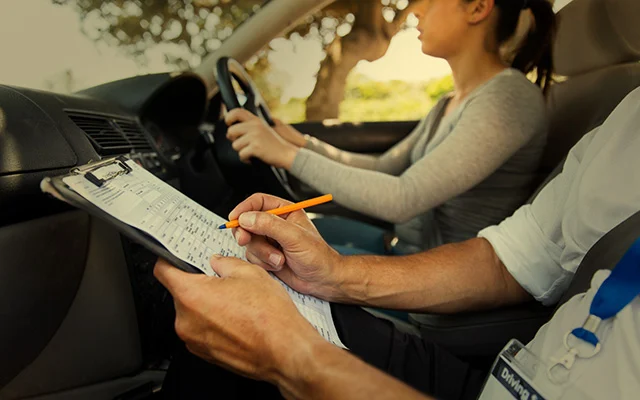Should You Take an Intensive Driving Course?
Learning to drive is a huge step toward independence. For many people, the biggest question isn’t whether to learn. It’s how to learn. You may already have seen ads for intensive driving courses promising that you can go from complete beginner to fully licenced in as little as a week. It sounds tempting, especially if you are eager to get on the road quickly.
However, intensive courses are not the perfect solution for everyone. Some learners love the fast pace. Others find it overwhelming or stressful. Before you make your decision, it is worth understanding exactly what an intensive course involves, who they are best for, and what the pros and cons look like in real life.
This guide will help you decide whether an intensive driving course is the right way forward for you.
What exactly is an intensive driving course?
An intensive driving course, sometimes called a “crash course,” is designed to teach you all the skills needed to pass your driving test in a short period of time. Instead of one or two lessons per week, you may be driving several hours per day for one to two weeks.
It is a big commitment, both mentally and physically. You are essentially cramming months of learning into a short space of time. Many providers bundle both the lessons and the test into one package.
The goal. Get you through the test faster. The reality? Fast doesn’t always mean easy.
How long do intensive courses usually take?
It depends on your starting point:
• Complete beginners may need 30 to 45 hours over 1 to 3 weeks
• Those with some experience may need 10 to 20 hours over a few days
• Near-test-ready drivers may only take 5 to 10 hours before their test
Before booking, some companies ask you to take an assessment drive to recommend the right course length. That is helpful because choosing too short a course can leave you unprepared and frustrated.
Why are intensive courses so popular?
Life is busy. People have exams, jobs, childcare, and holidays to think about. A traditional route to passing a driving test can take months. Intensive courses give learners a faster track when waiting simply isn’t an option.
Here are some common reasons people choose intensive learning:
• They need a driving licence for work
• They have a deadline such as the end of school or university
• They feel they will learn better without long gaps between lessons
• They simply want independence as soon as possible
If you feel impatient or your circumstances require a quick turnaround, intensive learning might look very appealing.

The benefits of an intensive driving course
There are real advantages to learning fast. Here are the ones learners often enjoy most:
Faster progress and quicker results
Driving every day helps skills stick faster. Repetition builds confidence and muscle memory quickly because you never lose momentum.
No long waits between lessons
You don’t spend half your lesson trying to remember what you learned last week. You pick up exactly where you left off.
A strong focus on the test
Courses often structure lessons around the driving test requirements. If your goal is simply to pass, it keeps everything focused and efficient.
Good for motivated learners
If you love the idea of learning intensely and getting things done, the fast pace can feel exciting.
A boost in confidence
Some learners feel more confident when they see rapid improvement day by day.
On paper, these advantages look great. However, there are important things to consider before jumping in.
The downsides of intensive courses
It’s only fair to be honest. Intensive courses are not for everyone.
Here are the most common challenges:
It can be mentally overwhelming
Driving requires concentration, especially when learning complex skills like roundabouts, clutch control, or dealing with other road users. Hours of intense focus every day can lead to fatigue.
Risk of struggling under pressure
If you learn quickly but are not fully confident by test day, nerves can lead to mistakes. Pressure to pass fast can actually slow you down.
Less time for real-world experience
You may not get enough practice in different weather, night driving, heavy traffic, or unfamiliar routes. Experience matters.
It can be expensive if you need more hours
Failing the test after a costly course means paying again for more lessons and another test. That adds up quickly.
Not ideal for anxious or nervous learners
If you need time to process what you learn, the pace may feel too rushed.
You might pass the test but feel unprepared afterward
Some people pass but still feel uncomfortable driving alone. The test measures safety on the day, not long-term confidence.
Who is an intensive driving course good for?
Intensive courses can be fantastic for the right person. You may be a good fit if:
• You are a fast learner
• You stay calm under pressure
• You don’t get easily overwhelmed
• You already have some driving experience
• You can commit fully for the duration of the course
• You have strong motivation, like starting a new job soon
If that sounds like you, an intensive course could help you reach your goal efficiently.
Who might struggle with intensive learning?
You may want to avoid an intensive course if:
• You are a complete beginner who is very nervous
• You learn better with time to practise between lessons
• You find fast-paced learning stressful
• You struggle with confidence in new situations
• You don’t like feeling rushed
• You prefer a patient, step-by-step approach
There is no shame in taking the traditional route. Many learners do. What matters most is feeling safe and prepared.
Why some people learn better with weekly lessons
Steady weekly lessons allow more reflection and growth. You have time to think about what went well and what needs improvement. You can practise outside lessons, building strong road confidence gradually.
Some skills simply need time. For example:
• Smooth clutch control
• Roundabout judgment
• Parking in real-life car parks
• Handling peak traffic calmly
Learning slowly can sometimes mean learning better.
What about a semi-intensive course?
Semi-intensive learning gives you the best of both worlds. It usually means 2 to 4 lessons per week. You still progress quickly, but with more breathing space.
It is a great option if you want speed but don’t want to feel overwhelmed.
Does an intensive course guarantee a pass?
This is important. No course can guarantee a pass. Even if companies claim high success rates, driving tests depend on:
• Hazard awareness
• Safe judgment
• Staying calm under pressure
• Real skill behind the wheel
If a company promises guaranteed passes, be wary. That usually just means you pay more for future test attempts.
Tips for success on an intensive course
If you decide to go for it, here are simple ways to make the most of your investment:
• Choose a reputable, qualified instructor
• Take breaks during the day to avoid burnout
• Eat well and stay hydrated
• Ask lots of questions
• Practise outside lessons if possible
• Don’t rush into the test if you don’t feel ready
Confidence comes from preparation, not pressure.
How much do intensive driving courses cost?
Prices vary based on your location, hours needed, and whether the test is included. On average in the UK, you might expect:
• £900 to £1,800 for a beginner course
• £400 to £900 if you already have some experience
Automatic courses can be slightly more expensive.
Always check what the price includes:
• Practical test booking
• Theory test booking (if needed)
• Pick-up and drop-off
• Insurance
• Dual controls
Compare a few providers before deciding.
Final thoughts
So, should you take an intensive driving course? The answer depends on you.
Choose an intensive course if you:
• Want to pass quickly
• Cope well with fast learning
• Can fully commit to the schedule
• Prefer short-term pressure over long-term waiting
Stick with regular lessons if you:
• Prefer a calmer learning pace
• Want to build confidence gradually
• Learn better with more road experience
• Do not want to feel rushed into a test
There is no one right way to learn to drive. What matters is that you become a safe, confident driver who feels truly ready for the road ahead.
Trust yourself. Listen to what feels right. Becoming a driver is a big achievement and you deserve to reach that moment in a way that supports your success.
Whether you learn fast or learn steadily, you will get there. The key is choosing the path that helps you feel strong, capable, and proud behind the wheel.
You are already moving in the right direction.


